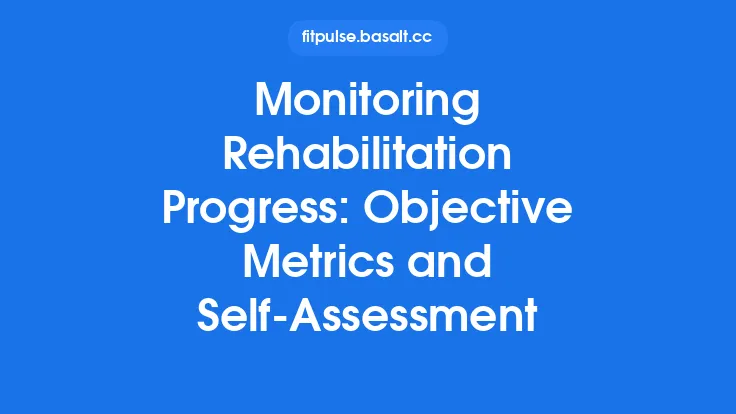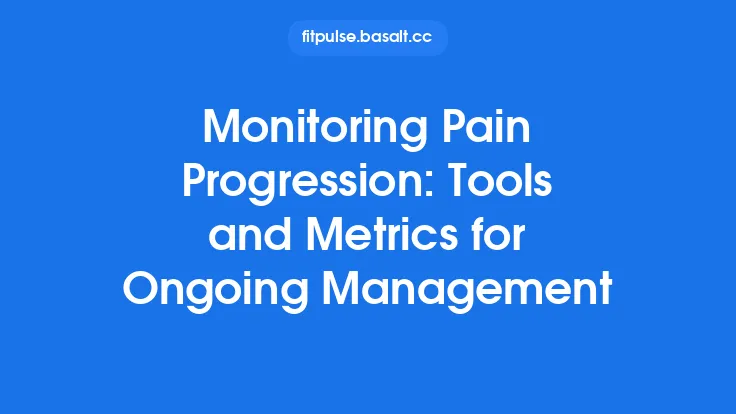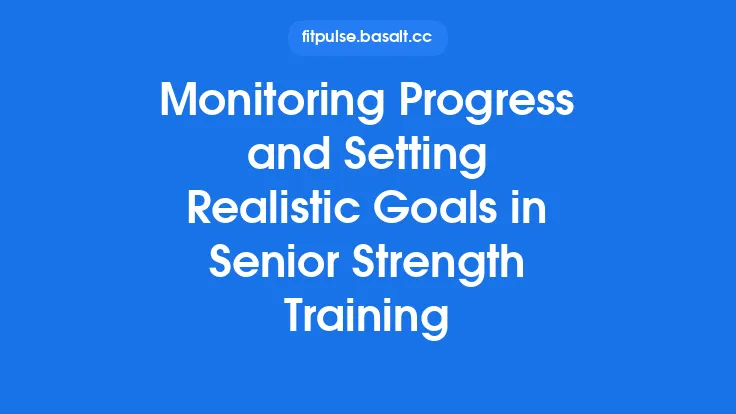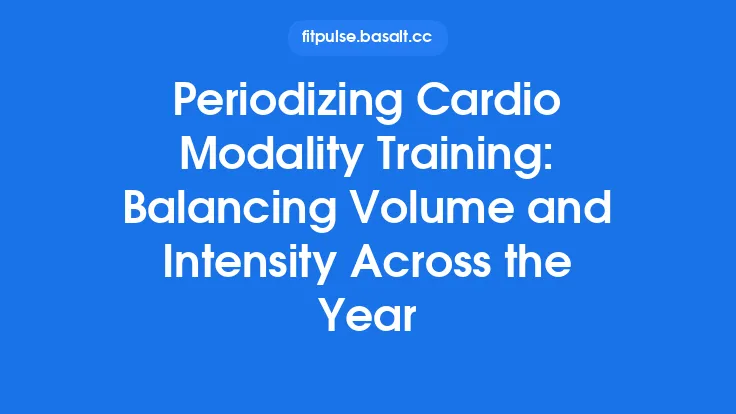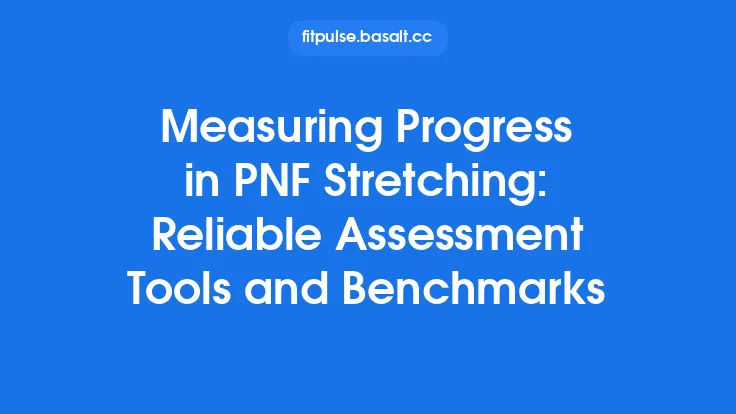Cardiovascular fitness is a moving target‚ÄĒwhat constitutes ‚Äúgood‚ÄĚ performance for a 12‚ÄĎyear‚ÄĎold differs markedly from what is expected of a 45‚ÄĎyear‚ÄĎold or a 70‚ÄĎyear‚ÄĎold. Monitoring progress, therefore, cannot rely on a one‚ÄĎsize‚ÄĎfits‚ÄĎall checklist. Instead, it demands a nuanced set of metrics that respect the physiological realities of each life stage, coupled with tools that deliver reliable data without imposing undue burden. This article walks through the most informative, age‚ÄĎtailored indicators of cardio health, explains how to interpret them, and highlights the technology that makes continuous, meaningful tracking possible.
Why Age Matters in Cardio Monitoring
The cardiovascular system evolves throughout life. In youth, maximal heart rate (HRmax) is high, stroke volume is still maturing, and autonomic balance leans toward sympathetic dominance during activity. In adulthood, VO‚āāmax typically peaks in the late 20s to early 30s before entering a gradual decline of roughly 1‚ÄĮ% per year. In seniors, arterial stiffness, reduced ő≤‚ÄĎadrenergic responsiveness, and a lower maximal cardiac output reshape the performance envelope.
These physiological shifts affect what can be measured reliably and how the numbers should be interpreted:
| Age Group | Typical Physiological Profile | Implications for Monitoring |
|---|---|---|
| Youth (‚Čą‚ÄĮ10‚ÄĎ18‚ÄĮyr) | High HRmax, rapidly changing body mass, developing aerobic enzymes | Emphasize relative intensity (percentage of HRmax) and recovery kinetics rather than absolute VO‚āāmax values. |
| Adult (‚Čą‚ÄĮ19‚ÄĎ64‚ÄĮyr) | Near‚ÄĎpeak VO‚āāmax, stable resting HR, moderate arterial compliance | Absolute VO‚āāmax, lactate threshold, and heart‚ÄĎrate variability (HRV) become robust markers of fitness and fatigue. |
| Senior (‚Č•‚ÄĮ65‚ÄĮyr) | Lower HRmax, increased resting HR, greater variability in cardiac output | Focus on sub‚ÄĎmaximal efficiency (e.g., oxygen uptake at a fixed workload), HRV trends, and functional recovery times. |
Understanding these baselines prevents misclassification‚ÄĒe.g., labeling a teenager‚Äôs lower VO‚āāmax as ‚Äúpoor‚ÄĚ when it merely reflects a lower body mass, or interpreting a senior‚Äôs higher resting HR as a sign of overtraining rather than age‚ÄĎrelated autonomic shift.
Core Physiological Metrics Across the Lifespan
- Resting Heart Rate (RHR)
- What it tells you: Baseline autonomic tone; lower RHR generally indicates higher parasympathetic dominance and cardiovascular efficiency.
- Age‚ÄĎspecific nuance: Youth may exhibit RHR as low as 50‚ÄĮbpm during peak conditioning, while seniors often settle around 70‚ÄĎ80‚ÄĮbpm even when fit. Track trends rather than absolute numbers.
- Maximum Heart Rate (HRmax)
- What it tells you: Upper limit of cardiac chronotropic response; essential for prescribing relative intensity zones.
- Age‚ÄĎspecific nuance: The classic ‚Äú220‚ÄĮ‚Äď‚ÄĮage‚ÄĚ formula is a rough estimate; for youth, a more accurate model is `208‚ÄĮ‚Äď‚ÄĮ0.7‚ÄĮ√ó‚ÄĮage`. Seniors may benefit from a field‚ÄĎderived HRmax test (e.g., a 3‚ÄĎminute step test) to capture individual variability.
- VO‚āāmax (Absolute & Relative)
- What it tells you: The gold‚ÄĎstandard measure of aerobic capacity‚ÄĒhow much oxygen the body can transport and utilize per minute.
- Age‚ÄĎspecific nuance: Relative VO‚āāmax (ml¬∑kg‚ĀĽ¬Ļ¬∑min‚ĀĽ¬Ļ) is useful for youth and adults, while absolute VO‚āāmax (L¬∑min‚ĀĽ¬Ļ) may be more informative for seniors whose body mass is stable but whose relative values decline.
- Heart‚ÄĎRate Variability (HRV)
- What it tells you: Balance between sympathetic and parasympathetic activity; higher HRV generally reflects better recovery and adaptability.
- Age‚ÄĎspecific nuance: HRV naturally decreases with age. For youth, daily HRV fluctuations can signal overreaching; for seniors, a steady upward trend over weeks may indicate improved autonomic health.
- Lactate Threshold (LT) / Ventilatory Threshold (VT)
- What it tells you: The intensity at which lactate begins to accumulate faster than it can be cleared, marking the transition from aerobic to anaerobic metabolism.
- Age‚ÄĎspecific nuance: While LT is a powerful predictor of performance in adults, for seniors a sub‚ÄĎmaximal proxy‚ÄĒsuch as the point where ventilation rises disproportionately‚ÄĒoffers a safer, still informative metric.
- Recovery Heart Rate (RHR‚āĀ‚ÄĎmin, RHR‚āÖ‚ÄĎmin)
- What it tells you: Speed of autonomic re‚ÄĎengagement post‚ÄĎexercise; faster drops indicate superior cardiovascular fitness.
- Age‚ÄĎspecific nuance: Youth typically recover to within 20‚ÄĮbpm of baseline within a minute; seniors may need 3‚ÄĎ5‚ÄĮminutes. Tracking the percentage of recovery rather than raw beats accommodates age differences.
- Functional Capacity Tests
- Examples: 6‚ÄĎminute walk test (6MWT), timed up‚ÄĎand‚ÄĎgo (TUG), or a 1‚ÄĎkm rowing ergometer trial.
- What they tell you: Real‚ÄĎworld endurance and mobility, integrating cardiovascular, musculoskeletal, and neuromotor components.
- Age‚ÄĎspecific nuance: Choose a test that matches the individual‚Äôs typical activity level; for youth, a shuttle run may be appropriate, while seniors benefit from the 6MWT.
Youth‚ÄĎSpecific Considerations for Metric Selection
- Growth‚ÄĎAdjusted Norms: Because body mass and height change rapidly, express VO‚āāmax both relative to lean body mass and absolute terms. Dual reporting prevents misinterpretation when a teen gains muscle.
- Short‚ÄĎTerm Variability: Hormonal fluctuations (e.g., puberty) can cause day‚ÄĎto‚ÄĎday swings in HRV and resting HR. Use a rolling 7‚ÄĎday average to smooth noise.
- Safety First: When estimating HRmax for high‚ÄĎintensity intervals, cap the target at 90‚ÄĮ% of the measured HRmax from a supervised field test to avoid excessive cardiac strain.
- Engagement Metrics: Incorporate perceived exertion (RPE) alongside physiological data. In youth, a simple 0‚ÄĎ10 scale correlates well with heart‚ÄĎrate zones and can be logged via mobile apps.
Adult‚ÄĎCentric Monitoring Strategies
- Periodized Data Review: Adults often follow structured training blocks. Align metric collection (e.g., VO‚āāmax test, LT assessment) with the end of each block to gauge adaptation.
- HRV as a Fatigue Indicator: A drop of >‚ÄĮ15‚ÄĮ% from baseline over three consecutive mornings can flag insufficient recovery, prompting a temporary reduction in training load.
- Absolute vs. Relative VO‚āāmax: For athletes whose body mass fluctuates (e.g., cyclists cutting weight), track both absolute and relative values to differentiate true aerobic changes from body‚ÄĎcomposition effects.
- Lactate Threshold Mapping: Conduct a graded exercise test (GXT) with blood lactate sampling every 2‚ÄĮminutes. Plot lactate concentration against workload to pinpoint the 4‚ÄĮmmol¬∑L‚ĀĽ¬Ļ threshold‚ÄĒa reliable predictor of endurance performance.
Senior‚ÄĎFocused Metrics and Safety Nets
- Sub‚ÄĎMaximal VO‚āā Estimation: Use protocols like the Rockport Walk Test or a 3‚ÄĎminute step test to estimate VO‚āāmax without pushing seniors to maximal effort.
- Arterial Stiffness Indices: Pulse wave velocity (PWV) measured via a simple cuff can complement traditional cardio metrics, offering insight into vascular health that directly impacts aerobic capacity.
- Recovery Kinetics Emphasis: Track the time required for heart rate to return to within 5‚ÄĮ% of resting values after a standardized 5‚ÄĎminute walk. A progressive shortening of this interval signals improved autonomic resilience.
- HRV Trend Analysis: Because baseline HRV is lower, focus on directional changes. A consistent upward trend over 4‚ÄĎ6 weeks, even if the absolute value remains modest, is clinically meaningful.
Technology Landscape: Tools Tailored to Each Age Group
| Category | Youth‚ÄĎFriendly Tools | Adult‚ÄĎOptimized Tools | Senior‚ÄĎAppropriate Tools |
|---|---|---|---|
| Wearable Heart‚ÄĎRate Monitors | Chest‚ÄĎstrap sensors (e.g., Polar H10) paired with gamified apps; lightweight wristbands with optical HR sensors (e.g., Garmin v√≠vofit Jr.) | Multi‚ÄĎsensor smartwatches (Apple Watch, WHOOP) offering HRV, VO‚āāmax estimates, and training load analytics | Simple wrist‚ÄĎworn devices with large displays and automatic arrhythmia detection (e.g., Fitbit Charge 6, Withings ScanWatch) |
| Portable Metabolic Analyzers | Handheld VO‚āāmax kits (e.g., Cosmed K5) for school labs; not routinely needed for casual monitoring | Lab‚ÄĎgrade portable systems for precise VO‚āāmax and LT testing (e.g., MetaMax 3B) | Sub‚ÄĎmaximal metabolic carts that integrate with treadmill protocols for seniors (e.g., Parvo Medics TrueOne 2400) |
| ECG & Arrhythmia Screening | Mobile ECG patches (e.g., KardiaMobile) for occasional screening during high‚ÄĎintensity sports | Continuous ECG monitoring via smartwatch for early detection of atrial fibrillation in high‚ÄĎrisk adults | Dedicated single‚ÄĎlead ECG devices with automatic alerts for brady‚ÄĎ or tachy‚ÄĎarrhythmias (e.g., AliveCor KardiaMobile 6L) |
| Software & Data Platforms | Cloud‚ÄĎbased dashboards with parental access, visual progress badges, and school‚ÄĎwide leaderboards | Integrated training platforms (TrainingPeaks, Final Surge) that sync HRV, power, and VO‚āā data for periodization | User‚ÄĎfriendly health portals (MyChart, Apple Health) that aggregate HR, HRV, step count, and medication reminders |
| Functional Test Apps | Shuttle‚ÄĎrun timing apps that use phone accelerometers; video‚ÄĎbased form analysis for safety | 6‚ÄĎminute walk test apps with GPS‚ÄĎbased distance tracking and automatic VO‚āā estimation | Step‚ÄĎcount and gait‚ÄĎanalysis apps that flag deviations in stride length or cadence, indicating potential mobility issues |
Key Considerations When Selecting Tools
- Data Accuracy vs. Usability: Youth may tolerate a chest strap for precise HR data, but seniors often prefer a wrist device with minimal setup. Choose the highest‚ÄĎaccuracy sensor that the user will consistently wear.
- Regulatory Compliance: For any device that records ECG or arrhythmia data, ensure FDA clearance (or equivalent) for medical use, especially when monitoring seniors with known cardiac conditions.
- Interoperability: Opt for platforms that support open data standards (e.g., FIT, TCX, CSV) to enable seamless export to professional analysis tools or electronic health records.
- Battery Life & Comfort: Long‚ÄĎterm monitoring (e.g., 24‚ÄĎhour HRV) demands at least 5‚ÄĎday battery life and a non‚ÄĎirritating strap material to avoid data gaps.
Data Quality, Validation, and Interpretation
- Signal‚ÄĎto‚ÄĎNoise Ratio (SNR): Optical HR sensors can be compromised by motion artefacts. Validate readings against a chest‚ÄĎstrap reference during the first week of use; apply correction algorithms if discrepancies exceed 5‚ÄĮ%.
- Calibration Protocols: For VO‚āāmax estimations derived from wearables, schedule a laboratory‚ÄĎgrade test annually to recalibrate the device‚Äôs predictive model.
- Statistical Smoothing: Use moving averages (7‚ÄĎday for HRV, 14‚ÄĎday for resting HR) to filter daily fluctuations. Apply exponential smoothing for trend detection in longitudinal studies.
- Normalization: When comparing across ages, express metrics relative to age‚ÄĎpredicted norms (e.g., % of age‚ÄĎpredicted HRmax, % of age‚ÄĎadjusted VO‚āāmax) to maintain fairness.
- Clinical Flags: Set automated alerts for values that cross clinically relevant thresholds‚ÄĒe.g., resting HR >‚ÄĮ100‚ÄĮbpm, HRV SDNN <‚ÄĮ30‚ÄĮms in seniors, or a sudden >‚ÄĮ10‚ÄĮ% drop in VO‚āāmax over a month.
Building a Long‚ÄĎTerm Monitoring Framework
- Baseline Establishment (Weeks‚ÄĮ1‚ÄĎ4)
- Conduct a comprehensive assessment: resting HR, HRmax (field test), VO‚āāmax (sub‚ÄĎmax or maximal), HRV (5‚ÄĎminute supine recording), and a functional capacity test.
- Record anthropometrics (height, weight, body‚ÄĎfat percentage) to enable relative metric calculations.
- Periodic Re‚ÄĎAssessment (Every‚ÄĮ6‚ÄĎ12‚ÄĮWeeks)
- Repeat VO‚āāmax or sub‚ÄĎmaximal VO‚āā estimate.
- Update HRmax if the individual has undergone significant training adaptations.
- Re‚ÄĎrun functional capacity tests to capture changes in real‚ÄĎworld endurance.
- Continuous Daily Tracking
- Log resting HR each morning.
- Capture HRV each night (or first thing upon waking) using a consistent device and posture.
- Record training sessions automatically via wearable, ensuring heart‚ÄĎrate zones are stored.
- Data Review & Decision Points
- Weekly: Review trends in resting HR and HRV; adjust training load if HRV declines >‚ÄĮ15‚ÄĮ% from baseline.
- Monthly: Compare VO‚āāmax or sub‚ÄĎmax estimates to prior values; if improvement <‚ÄĮ2‚ÄĮ% over two months, consider program modification.
- Quarterly: Conduct a full reassessment and discuss findings with the individual (or caregiver/clinician for seniors) to set realistic goals.
- Feedback Loop
- Use visual dashboards that highlight progress (e.g., ‚ÄúYour recovery heart‚ÄĎrate after a 5‚ÄĎminute walk improved by 12‚ÄĮ% over the last month‚ÄĚ).
- Provide actionable recommendations: ‚ÄúAdd two low‚ÄĎintensity walking sessions this week to boost HRV.‚ÄĚ
Practical Tips for Coaches, Clinicians, and Individuals
- Start Simple: For beginners, focus on resting HR, HRV, and a single functional test. Add VO‚āāmax and lactate threshold only when the individual is comfortable with basic tracking.
- Educate on Meaning: Explain that a higher resting HR in seniors is not automatically a sign of poor fitness; it must be viewed relative to personal baseline trends.
- Mind the Context: Seasonal changes, travel, sleep disturbances, and hydration status can all affect HRV and resting HR. Annotate the data log with contextual notes.
- Prioritize Consistency: Encourage the same measurement conditions each day‚ÄĒsame time, same posture, same device‚ÄĒto reduce variability.
- Leverage Community: For youth programs, aggregate anonymized data to identify group trends without exposing personal health information. For seniors, involve family members in data review to foster adherence.
- Integrate with Health Care: Share validated data (e.g., ECG recordings, VO‚āāmax trends) with primary care providers, especially for seniors with comorbidities, to inform medical decision‚ÄĎmaking.
By aligning the right metrics with the physiological realities of each age group and pairing them with technology that respects usability and accuracy, monitoring cardio progress becomes a powerful, lifelong tool. Whether a teenager is learning to gauge effort, an adult is fine‚ÄĎtuning performance, or a senior is safeguarding heart health, a structured, data‚ÄĎdriven approach transforms vague ‚Äúfeeling better‚ÄĚ into quantifiable, actionable insight. The result is not just improved cardiovascular conditioning, but a clearer picture of overall health that can guide training, medical care, and everyday well‚ÄĎbeing for years to come.
